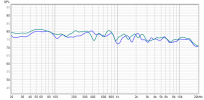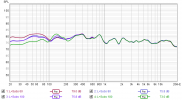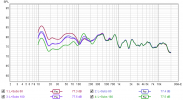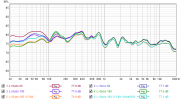Hi all,
I'm still a noob at interpreting REW measurements. I am using MultiEQ-X, a Denon X8500H, a. Purifi stereo amplifier, two Revel M126Be speakers as mains and two Rhythmik 1000w Hypex sealed subs. I took measurements of the full spectrum left channel + subs with a 60 crossover and with a 100 crossover. Can anyone help me understand if one is better than the other and if so, why?
Thank you in advance for any advice.

I'm still a noob at interpreting REW measurements. I am using MultiEQ-X, a Denon X8500H, a. Purifi stereo amplifier, two Revel M126Be speakers as mains and two Rhythmik 1000w Hypex sealed subs. I took measurements of the full spectrum left channel + subs with a 60 crossover and with a 100 crossover. Can anyone help me understand if one is better than the other and if so, why?
Thank you in advance for any advice.
Attachments
Last edited:




